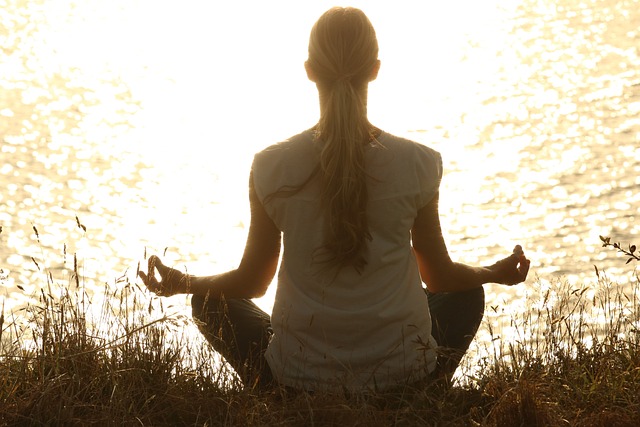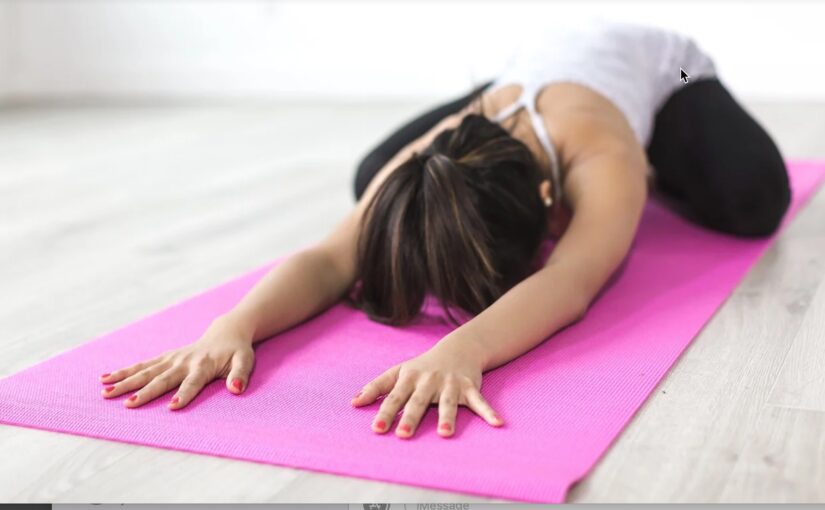Finding what types of yoga are right for you can feel a lot like shopping for pasta sauce: standing in the condiment aisle, gazing at the wall of what seems like thousands of different brands to choose from.
All those different brands of pasta sauce are just combinations of tomatoes, herbs, and usually, salt. Similarly, all the different types of yoga are combinations of a few ingredients:
- Postures
- Breathing techniques
- Intensity
- Interpretations of philosophy
Often times, when people try yoga with the hopes of developing a long-term practice, but can’t get it to stick, they aren’t practicing a type of yoga that is compatible with them. We are here to help! This article will introduce you to the most popular types of yoga and help you discover which type is the best fit for you.
The Roots of Western Types of Yoga
The roots of all the types of yoga we practice in the West, known as posture-based yoga, stem from the Hatha Yoga Pradipika, a sanskrit manual that instructs on the environment and ethical duties of a practitioner, the yoga postures (asana), breath work (pranayama), symbolic hand gestures (mudras), and meditation (the journey towards samadhi).
Prior to the rise in popularity of postural yoga around the mid 20th century in the United States, asana–the postures we think of as yoga today–was used primarily to prepare the body for breath work (pranayama) and meditation.
If we imagine the variety of yoga styles as a tree, then Hatha yoga is the trunk. It’s the primordial yoga type and foundation of all the other styles of yoga. From Hatha grew the branches of Ashtanga, Viniyoga, Yin, Iyengar. And the thousands of twigs and leaves of variations on the traditional styles that we know today.
Hatha* Yoga
“The mind is the lord of the senses, but the breath is the lord of the mind” – Yogi Swatmarama, Hatha Yoga Pradipika
Types of popular hatha yoga can include:
Hatha flow classes; Iyengar; Jivamukti; Kripalu
Hatha (ha = sun; tha = moon) refers to the balance of energies within the body. A modern hatha yoga class intends to create balance and an overall feeling of ease and a sense of groundedness.
A Hatha class typically includes traditional postures with longer holds, as opposed to flow style classes that have a faster tempo. Hatha classes are designed for all levels and are especially great for beginners seeking an introduction to an active style of yoga that is typically accessible. Keep in mind that Hatha classes come in many shapes and sizes. When in doubt, ask a studio about the class offered and compare their description to your needs.
How to know if hatha yoga is right for you
- You are: an eager beginner; devoted traditionalist; astrological earth sign.
- When your body needs: to slow down and experience some stillness while building strength and finding my physical edge.
- If your intention is: to cultivate more balance in my life.
* Note that Hatha yoga is a general term that can include many different types depending on the teacher and studio.
Vinyasa* Yoga
“Discipline means you can take yoga practice. Stamina comes first in the body. Strength comes first in the body. Body means there are three types of body: external body, internal body, spiritual body. Those are the three types of body strength” – Krishna Pattabhi Jois, founder of Ashtanga yoga
Types of vinyasa classes:
Ashtanga; Power Flow; Anusara; CorePower
Vinyasa might be the most popular style of yoga in the West. Vinyasa yoga, beloved for its fast-paced and strength building qualities, originates from Ashtanga yoga, taught by its founder Sri. K. Patthabi Jois.
The word vinyasa loosely translates to “to place in a special way” . This refers to the sequence of postures. In a vinyasa class, the postures are coordinated and you move with your breath. This style can feel like a moving meditation or a dance.
You may have been in a yoga class before and heard the phrase, “take a vinyasa”. A “vinyasa” refers to three different postures that are linked together (plank pose, chaturanga, and upward facing dog). Sun salutations include the “vinyasa” and are common in vinyasa style classes. Vinyasa classes are great if you’re seeking an active practice that challenges your strength and provides many opportunities for you to practice on your physical edge.
How to know if vinyasa yoga is right for you
- You are: A ‘type A’ city dwellers; competitive athlete or dedicated gym rat; looking for that toned ‘yoga bod’.
- When your body needs: to move; to dance; to feel challenged.
- If your intention is: to connect to a sense of vitality and vibrancy.
*Note that, like Hatha, Vinyasa is a general term that includes many different unique variations on the faster-paced style.
Yin Yoga
“If you are in a posture and you have the ability to flow with the energetic quality of one of the elements or animals then you can understand its purpose” – Paulie Zink, founder of Yin yoga
Yin yoga originated in China, but made its way into popularity in the West through Paulie Zink. This practice aims at balancing the abundance of yang energy in the body through stillness, holding postures for at least five minutes, and finding one’s edge:
| YIN | YANG |
|---|---|
| Hidden | EXPOSED |
| Cold | HOT |
| Still | MOVING |
| Downward | UPWARD |
| Earth | HEAVEN |
| Calm | EXCITED |
Yin yoga is rooted in Chinese Taoist philosophy and based in animal qualities and the five alchemical elements of Chinese medicine: Earth, Metal, Water, Wood, and Fire. Yin yoga is often practiced in coordination with the seasons, offering postures that benefit the body through compensating for what the body needs during a particular season. A goal of Yin yoga is to create greater flexibility and restoration to the joints and fascia of the body through the unfolding of held postures and connecting to the elements associated with each pose. Rather than holding active, effortful postures, yin postures are often low to the ground, either on the back, the stomach, or the seat, and utilize yoga props to accommodate all bodies.
How to know if yin yoga is right for you
- You are: A woodstock-era hippy; open-minded gym rat.
- When your body needs: to balance strenuous workouts or tight muscles and joints; to compensate for an abundance of yang energy.
- If your intention is: to ground; to connect to the seasons and nature.
Restorative Yoga
“Taking time out of each day to relax and renew is essential to living well” – Judith Hanson Lasater, author of Relax and Renew: Restful Yoga for Stressful Times
One of my yoga teachers once referred to restorative yoga as the “dessert” of yoga styles. Restorative yoga is about deep and restful relaxation. This is only possible when the body is fully supported. You use many props – blankets, bolsters, blocks, and sometimes sandbags – in order to allow the body to completely relax and restore itself.
The four key components of restorative yoga are 1) support; 2) stillness; 3) breath; 4) time. The word restore means to bring back; to return to an original condition’. Restorative yoga is the perfect, and necessary, complement to a busy lifestyle, an active body, or a stressful mind.
Restorative yoga has gained attention in the medical community for its support in managing stress and anxiety. The postures of restorative yoga can help calm the nervous system and reduce stress hormones.
With fast-paced technology and stress that comes from a busy lifestyle, many Americans overuse the sympathetic nervous system, which rules the body’s fight-or-flight response that gets activated when you feel threatened.
In contrast, the parasympathetic nervous system activated when we’re relaxed is strengthened in restorative yoga. It also reduces the amount of cortisol and adrenaline (stress hormones). This practice of re-learning how to relax is vital to strengthening our ability to flow flexibly between states of stress and return the body to homeostasis.
How to know if restorative yoga is right for you
- You are: A busy, overwhelmed mother; avid meditator; a tight, aching body; introvert.
- When your body needs: to relax, to heal, or to calm down after a busy day; an Epsom salt bath; a massage.
- If your intention is: to rest.
Gentle Yoga
“Gentle is the new advanced” – J. Brown, yoga teacher
Types of popular gentle yoga can include:
Gentle flow classes; Chair Yoga
Gentle yoga is slow, safe, and full of ease. In a gentle yoga class, you will be welcomed no matter what level of yoga you practice, though expect to move slow.
The pace of the class is intended to support bodies that require safer movements. Like restorative and yin, a gentle yoga class may also help support a dysregulated nervous system. A gentle yoga class is a wonderful place to gift your body, mind, and spirit with a hefty dose of self love. Everything from the postures to the language and pacing is intended to increase self-compassion.
How to know if gentle yoga is right for you
- The are: an aging body; Buddhist; cautious beginner; fans of participation trophies.
- When your body needs: to be reminded that it is ok to slow down.
- If your intention is: to cultivate more self-compassion.
Iyengar Yoga
“It is through the alignment of the body that I discovered the alignment of my mind, self, and intelligence” – B. K. S. Iyengar, founder of Iyengar yoga
Iyengar yoga is one of the most popular styles of yoga taught in the US today. It is systematic, meticulous, yoga prop-filled, and focused on receiving the therapeutic benefits of each posture.
A traditional Iyengar class is often open to all levels, but if you are a beginner, expect to feel like one. You will be instructed to use many props, such as bolsters, blocks, and blankets. Iyengar is a great way to learn alignment and support your body in therapeutic ways. In an Iyengar class, postures are often held for up to a couple of minutes. But don’t worry, with the systematic focus on alignment and the help of props, you will likely feel well-supported and balanced. And, as an added benefit research shows that Iyengar yoga improves high blood pressure.
How to know if Iyengar yoga is right for you
- You are: An athlete obsessed with the technical aspects of your sport; perfectionist; someone who enjoys building IKEA. furniture
- When your body needs: the precision of alignment; a physically therapeutic adjustment; systematic progression.
- If your intention is: to re-align with my integrity.
Anusara Yoga
“Yoga is about awakening. Yoga is about creating a life that brings more beauty and more love into the world” – John Friend, founder of Anusara
Anusara yoga has its roots in the tantric concepts of spiritual oneness and intrinsic goodness. Anusara, which means “flowing with grace”, is an active vinyasa practice that adheres to a set of universal alignment principles that ultimately seek to connect practitioners with their own sense of intrinsic goodness and spiritual well-being. Words like shakti, joy, pulsing, vibrating, spiraling, blossoming, and possibility are abundant in these heart-based classes.
In Tantric wisdom, everything in the physical world is an embodiment of a supreme, spiritual consciousness. Postures seek to embody the tantric-based spiritual principles taught in Anusara classes.
How to know if anusara yoga is right for you
- You are: a self-help reader or life coache; recovering from heartbreak.
- When your body needs: to feel emotionally inspired; to embody a positive perspective; to recover from #cubiclelife.
- If your intention is: to re-connect to my intrinsic goodness and pulsate with the abundant love of the universe.
Kundalini Yoga
“An attitude of gratitude brings great things” – Yogi Bhajan, famous Kundalini teacher
Although Kundalini yoga was introduced and popularized in the United States by Yogi Bhajan (founder of Yogi Tea), the roots of Kundalini stretch back to Vedic texts from about 1000 B.C.E. The word Kundalini comes from the Sanskrit word ‘kundal’, or ‘circular’ in English. This word alludes to a coiled energy at the base of the spine, envisioned as a snake. Kundalini practice aims to arouse this coiled energy through postures and techniques known as kriyas.
As the energy rises up the spine, it is said to pass through the seven main chakras, or energy wheels, of the body. The rising of Kundalini energy results in an awakening, or experiences spiritual enlightenment.
In a Kundalini class, expect to chant in sanskrit, engage in breathing exercises known as pranayama, and use specific mudras, or symbolic hand gestures, while making sounds and holding challenging postures in various intensities and repetitions. Make note: Kundalini is not for the faint of heart!
How to know if kundalini yoga is right for you
- You are: a lover of new age spirituality; resident of Venice Beach; sober but still want to get high.
- When your body needs: a new perspective; spiritual nourishment; a cup of coffee.
- If your intention is: to be grateful.
Hot Yoga (including Bikram)
“Transformation comes not by adding things on but by removing what didn’t belong in the first place” – Baron Baptiste, 40 Days to Personal Revolution
Types of hot yoga classes can include:
Bikram (105 degrees); CorePower (93-98 degrees and 105 degrees); Baptiste Power Vinyasa (95 degrees); Moksha (103 degrees); Yoga to the People (105-108 degrees)
These days, the umbrella of ‘hot yoga’ is so popular that it deserves its own category. The trend of purposefully heating studios, anywhere from 90 to 108 degrees Fahrenheit, began with the heated studios of Bikram yoga in the 1970s.
Bikram yoga classes follow a 26-pose series in which the postures are practiced in the same order, every time. In 2015, Bikram Choudhury, founder of Bikram yoga, was accused of rape and sexual misconduct by several women. Netflix created a documentary, “Bikram: Yogi, Guru, Predator”, detailing the toxicity of Choudhury and his yoga empire. Despite the Bikram scandal, many practitioners are still devoted to the heated practice.
From Bikram, other hot yoga styles emerged, some with predictable routines and others without. Whatever heated class you choose to attend, expect to sweat and move vigorously.
TRY https://www.goodkarmaintegrativeyoga.com
Hot yoga classes are strenuous workouts. Many avid hot yogis claim that the benefits they receive from practicing in heated rooms include greater flexibility, a rigorous workout, and detoxification of the body. However, one study found that hot yoga provides no added cardiovascular benefits for healthy, middle-aged adults than other styles of yoga. So keep in mind, if you choose to practice hot, you should probably love the heat.
NOTE: some doctors recommend skipping hot yoga if you suffer from heart disease, problems related to dehydration, heat intolerance, or a history of heat-related illness (like heatstroke).
How to know if hot yoga is right for you
- You are: an extremist; lover of the tropics; ex-Olympian.
- When your body needs: to sweat…a lot.
- If your intention is: to build resilience.
| Type of yoga | If you are: | When your body needs: | When you Intention is: | Intensity level | Philosophy |
|---|---|---|---|---|---|
| Hatha Yoga | At any level of practice | To ground and find balance | To cultivate balance | Low to medium | Heavy on tradition |
| Vinyasa Yoga | An advanced practitioner | To flow and experience variety | To connect to vitality and vibrancy | Medium to High | Moving meditation |
| Yin Yoga | An athlete with tight muscles and joints | To repair and recover | To slow down and connect to the seasons | Low | Based on Chinese medicine and connection to nature |
| Restorative Yoga | In need of respite | To rest and be nourished | Deep relaxation | Very low | Achieving relaxation |
| Gentle Yoga | An older practitioner | To heal and feel safe | To build self-compassion | Low | Finding ease and overall well being |
| Iyengar Yoga | Someone who wants to know how to do the pose “correctly” | To align and practice precision | To re-align with integrity | Medium | Aligning intellectual, physical, and spiritual bodies |
| Hot Yoga | An extremist | To sweat | To build resilience | Very high | Finding focus in intensity |
Types of yoga for me? There is no wrong choice
You know the old adage, all roads lead to the same destination? Yeah, that applies to choosing the types of yoga for you.
Choosing between the different types of yoga does not have to be a precious process–try not to overthink it. Sometimes, you get lucky and the first class just fits. Other times it takes patience and a willingness to try and try again.
Meeting the right yoga class involves a combination of the right timing, teacher, tempo, and teachings. Identifying the qualities that will satisfy your craving is a skill that requires honing in on three key questions:
Are these types of yoga within my window of tolerance?
The “Window of Tolerance”, is a metaphor that illustrates the healthy, internal space that allows us to be able to tolerate the ebbs and flows of a challenge without being overwhelmed.
Knowing when a class is within your window of tolerance asks you to tap into your interoception–your ability to perceive sensations from inside your body.
Interoception is what allows you to ask yourself, how does this feel?
If a yoga practice pushes you beyond your edge, you lose the ability to sense what is going on internally. When a yoga practice is within your window of tolerance, it brings your to your edge without taking you over.
When you’re pushed beyond your edge, you can become too frustrated to continue. It’s like a second-grader being assigned reading from Dostoevsky, or a beginner runner racing in a marathon.
When a class is within your window of tolerance, you might be in a challenging pose but you can notice the challenge and adjust your breathing. Your mind feels focused. Your muscles might burn, but you are present and here for it. You can tune into how you feel with openness and curiosity.
Tuning into your interoception is an important first step in selecting the class that is your Goldilocks version of ‘just right’ at a given moment.
What is the intention for my type of yoga?
In yogic philosophy, a sankalpa is a short phrase or sentence that clearly states an intention for the type of yoga you practice. This intention is often a positive change that you would like to make in your life.
Bahia Yoga suggests five tips for creating your sankalpa: 1) Reforming a habit; 2) Improving one’s quality of life; 3) Creating change; 4) Realizing something one wants to achieve; 5) A visual experience of something positive. For a sankalpa to come into fruition, it must be clearly stated and practiced.
The right yoga practice can help you make your intention a reality. For instance, are you seeking to eliminate stress? A slow paced gentle, yin, or restorative class can be a great place to practice. If you’re looking to improve stamina over your busy work days, a more vigorous vinyasa flow style might be right for you. But what you think you need, might not always be the best fit. To find balance among the different types of yoga might mean a practice that is just the opposite of what you think.
What do I need right now to find a healthy balance?
It’s tempting to match your conscious personality traits to the types of yoga that reflect them perfectly. This can be a great ‘way in’, but you might find it’s not ultimately what you need.
Our conscious mind, the ego, draws things that are comfortable, that we identify with. Yet there is another, deeper part of ourselves that seeks to bring us into balance by connecting with what we’re missing. For example, if we’re super intellectual, we might have very emotional dream.
In perhaps the most important source text of modern yoga, Patanjali’s Yoga Sutras , there are 195 aphorisms on the theory of yoga written in Sanskrit. The only sutra in all 195 dedicated to the physical practice of yoga is: sthira sukham āsanam which means,
- sthira: strong; steady; stable; motionless
- sukham: comfortable; ease filled; happy; light; relaxed
- āsanam: asana; posture; seated position; physical practice
Sthira sukham refers to the harmonious balance between effort and ease in a posture. And you can apply this idea to choosing a yoga style to practice.
You might consider: do I live a busy, fast-paced lifestyle? Then maybe vinyasa isn’t the kind of practice I need to cultivate right now. Instead, I might try a restorative practice to help bring a greater sense of harmony to my life.
Try https://www.dragonflyogabarn.com
Finding the Types of Yoga Right for You: The Bottom Line
Much like shopping for the right type of pasta sauce, sampling many types of yoga will be the best way to determine what the right style is right for you. Happy Yoga Trying!
Suffering from a Yoga Injury?
Yoga, with its multitude of poses and movements, is widely appreciated for promoting flexibility, strength, and mental wellbeing. However, like any physical activity, yoga can sometimes lead to injuries, often resulting from improper alignment, overstretching, or attempting advanced poses without adequate preparation. When such injuries occur, osteopathic care can play a crucial role in recovery and rehabilitation.

Osteopathic care, or Osteopathic Manipulative Medicine (OMM), is a holistic approach that emphasizes the integral connection between the body’s structure and function. Osteopathic physicians or DOs, understand that a disturbance in one part of the body can impact the overall system. Consequently, they aim to address the root cause of the problem, rather than simply treating the symptoms.
For yoga-related injuries, osteopathic care can be remarkably beneficial. One common yoga injury involves the musculoskeletal system, such as strains or sprains. In these cases, an osteopathic physician might use manipulative techniques to realign the body, relieve muscle tension, and improve circulation to the injured area, thereby facilitating the body’s natural healing process.
Moreover, the holistic nature of osteopathic care aligns perfectly with the overarching philosophy of yoga, which seeks to unite the mind, body, and spirit. Both disciplines value the body’s inherent ability to self-heal and self-regulate. Thus, the osteopath doesn’t just focus on the injury but also looks at the surrounding areas and even the patient’s overall health and lifestyle. This may involve advising on appropriate yoga modifications, suggesting proper body mechanics, or recommending rest and adequate hydration.
Consider a scenario where a yoga practitioner has sustained a lower back injury. The osteopath would examine not only the lower back but also the hips, pelvis, and even the feet, as these areas could contribute to lower back pain. Through a combination of hands-on techniques, the osteopath can restore balance, reduce pain, and enhance mobility.
Furthermore, osteopathic physicians might advise on preventative measures to reduce the risk of future injuries. This could involve guidance on transitioning safely between yoga poses, maintaining correct alignment, and building strength and flexibility gradually. After all, prevention is better than cure.
In essence, osteopathic care for yoga-related injuries leverages the holistic, patient-centered approach intrinsic to both osteopathy and yoga. It treats the whole person rather than isolated parts, encourages the body’s inherent healing mechanisms, and places a strong emphasis on prevention. The synergistic blend of these two disciplines thus offers a powerful and effective pathway towards recovery, resilience, and optimum wellbeing.


 common reaction to a chiropractic adjustment is aching or soreness in the spinal joint or muscles. The soreness usually occurs within the first few after your treatment and does not last longer than 24 hours after the chiropractic adjustment. Chiropractors may also use adjunctive therapy prior to attempting the chiropractic adjustment. Typical adjunctive therapies may include massage, therapeutic heat and/or cold application, gentle stretching and strengthening exercises, and electrical stimulation.
common reaction to a chiropractic adjustment is aching or soreness in the spinal joint or muscles. The soreness usually occurs within the first few after your treatment and does not last longer than 24 hours after the chiropractic adjustment. Chiropractors may also use adjunctive therapy prior to attempting the chiropractic adjustment. Typical adjunctive therapies may include massage, therapeutic heat and/or cold application, gentle stretching and strengthening exercises, and electrical stimulation. likely depend on your financial contributions for essential care. Any Millennials in a similar situation should consider buying life insurance to ensure the continued care of loved ones. The benefits can be used to fund long-term care, a college education or in any other capacity of care.
likely depend on your financial contributions for essential care. Any Millennials in a similar situation should consider buying life insurance to ensure the continued care of loved ones. The benefits can be used to fund long-term care, a college education or in any other capacity of care.
 and inflammation. Without effective treatment, these sports injuries will not properly heal. The body will then compensate for the injury pain by adjusting its movements, which can lead to new injuries. If you have sustained a sports injury, immediate care from a chiropractor is essential to preventing the build up of scar tissue and additional damage to the musculoskeletal system.
and inflammation. Without effective treatment, these sports injuries will not properly heal. The body will then compensate for the injury pain by adjusting its movements, which can lead to new injuries. If you have sustained a sports injury, immediate care from a chiropractor is essential to preventing the build up of scar tissue and additional damage to the musculoskeletal system.
 technique provides the perfect solution to a tricky residential roofing project. Similarly, many design elements in the residential market have been successfully adapted to commercial architecture to provide a unique or signature style – without compromising building integrity or function.
technique provides the perfect solution to a tricky residential roofing project. Similarly, many design elements in the residential market have been successfully adapted to commercial architecture to provide a unique or signature style – without compromising building integrity or function.